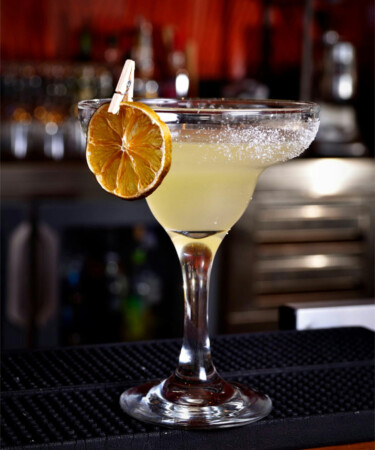For many bartenders and drinks enthusiasts, the right glassware is essential to the cocktail experience. Imagine trying to sip a Martini from a highball glass, or build a Ramos Gin Fizz in a coupe — it just doesn’t work. And while not all cocktails are tied to a specific glass, some require their own specialty glassware to achieve the optimal drinking experience.
For drinks like the Hurricane, the cocktail was invented in concert with the glassware, so the two have always been associated with each other. But in cases like the Martini, the iconic V-shaped glass evolved separately from the cocktail itself, though over time the two have become synonymous. Either way, when you order one of these drinks, you know exactly what it will (or at least should) be served in.
Read on to discover the cocktails that earned their own dedicated glassware.
Old Fashioned
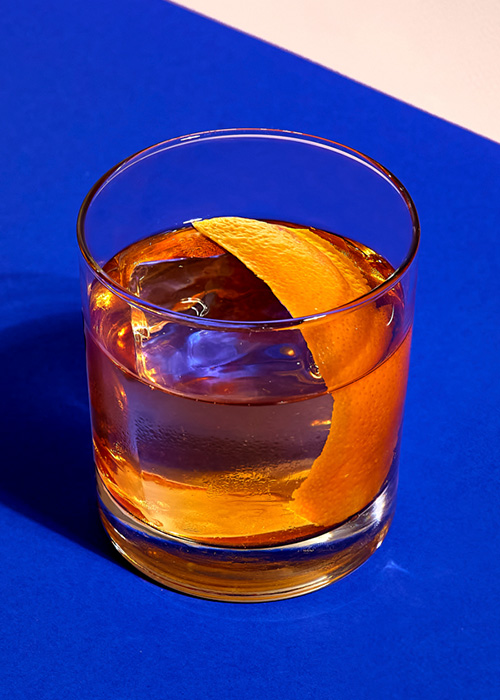
Widely considered to be the first-ever known cocktail, the Old Fashioned is legendary enough to have its own signature look. (The drink’s history even coincides with the first definition of the word “cocktail” published in a Hudson, N.Y., newspaper in 1806.) The original drink was likely served in a tumbler, wine glass, or whatever they had laying around back then, but over time it found its home in the Old Fashioned glass. Though it looks remarkably similar to a classic rocks glass, there are some notable differences between the two. The Old Fashioned glass is generally a bit smaller, holding about six to eight ounces and was designed for the drink to be built right in the glass, with a thick base to withstand any muddling or sugar cube-crushing; whereas the traditional rocks glass, which is also known as a double Old Fashioned glass, is a bit larger and more versatile.
Martini
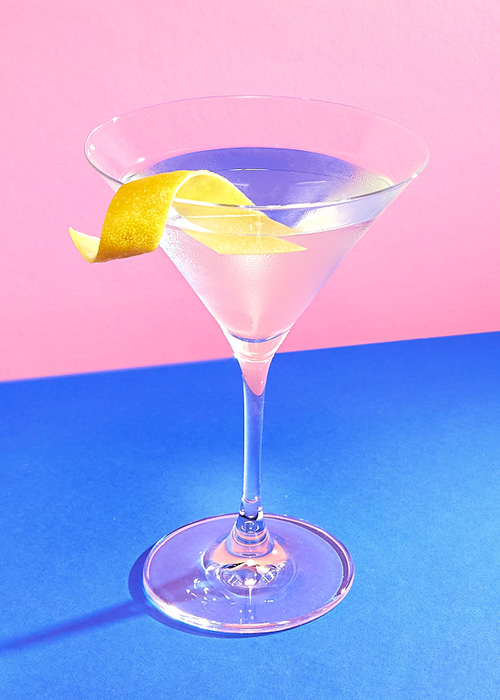
The Martini glass is so deeply associated with the cocktail itself that as soon as any liquid falls into the V-shaped vessel, it instantly becomes ‘tini-fied, as it goes for the Appletini, Lycheetini, and, of course, the currently trending Espresso Martini. But the iconic glass shape actually evolved separately from the cocktail. It was officially launched at the 1925 International Exhibition of Modern Decorative and Industrial Arts in Paris as a modern, angular take on the classic coupe. Though it was intended for Champagne, its fashionable design soon became associated with the also-of-the-moment Martini in the ‘40s and ‘50s. Though the Martini itself is as popular as ever, a growing number of bartenders are switching up the serving vessels like the slightly smaller Nick & Nora, which are arguably less susceptible to spillage.
Margarita
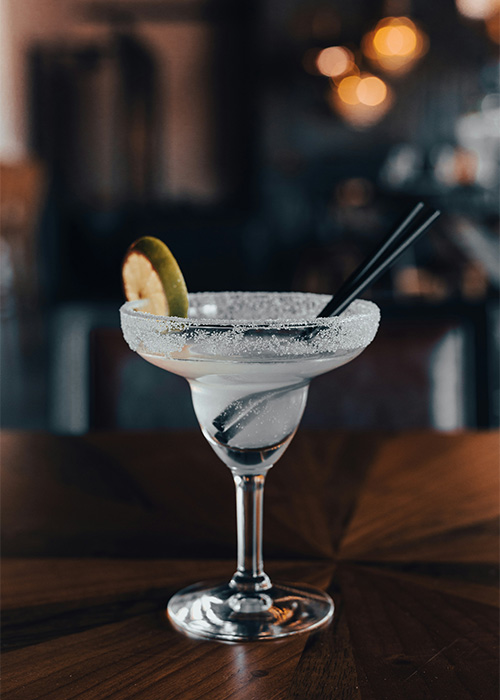
While a classic Margarita is often just served on the rocks, when it’s time for the full, festive experience, restaurants will break out the slightly more dramatic Margarita glasses. While no one knows the exact origin of the cup’s interesting shape, one theory claims that the glass first took off at a restaurant in Los Angeles. According to the story, the restaurant had ordered new Champagne coupes but accidentally received an odd batch of misshapen glasses. Now, when customers see a Margarita served in this kind-of-funky coupe — perhaps with a bottle of Corona face-down in the drink as well — they know they’re in for a good time.
Tom Collins

Primarily associated with the classic Tom Collins cocktail — though there are other drinks that bear the “Collins” name, like the John Collins — the Collins glass is a tall, wide vessel made for refreshing, carbonated drinks. It closely resembles a highball glass but with some key differences. The traditional highball glass is meant to house two-ingredient drinks (a spirit and a mixer), fitting about eight to 12 ounces of liquid whereas the Collins glass is usually 10 to 14 ounces and used for drinks with more than two parts (like the classic gin, lemon, simple syrup, and soda mix).
Hurricane
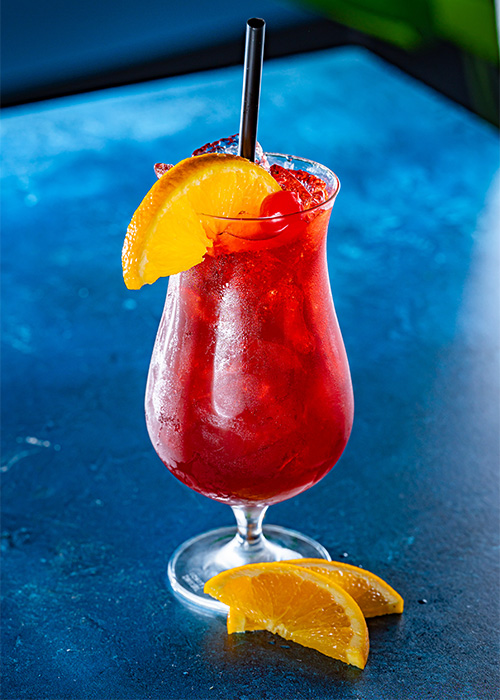
Modeled after the old-school hurricane lamps, the hurricane glass was central to the creation of the classic New Orleans cocktail by the same name. The drink was developed by Pat O’Brien, bartender at a Prohibition-era speakeasy in NOLA. At the time, whiskey was hard to come by, but the bars had a surplus of rum, and what better way to sell it than in a big, boozy cocktail. Now the tall, curvy glass is used to serve similar tropical drinks like frozen Piña Coladas, but is still heavily associated with this Louisiana favorite.
Zombie
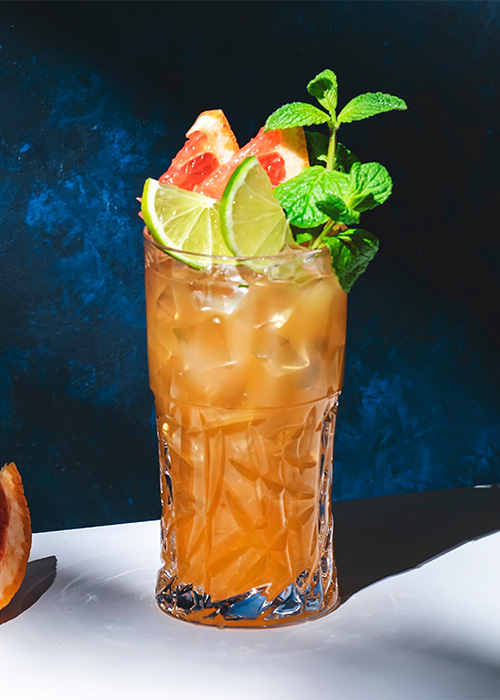
The Zombie is a notoriously boozy drink. So much so that the drink’s inventor, Don the Beachcomber, famously implemented a two-Zombie limit at his Hollywood restaurant. The build includes light rum, dark rum, apricot brandy, falernum liqueur, overproof rum mixed with lime juice, pineapple juice, and grenadiine. In order to fit all those ingredients in one cocktail, the drink needed a specialty glass. The Zombie glass is similar to a classic Collins, but is even taller to accommodate all the rum.
Mint Julep
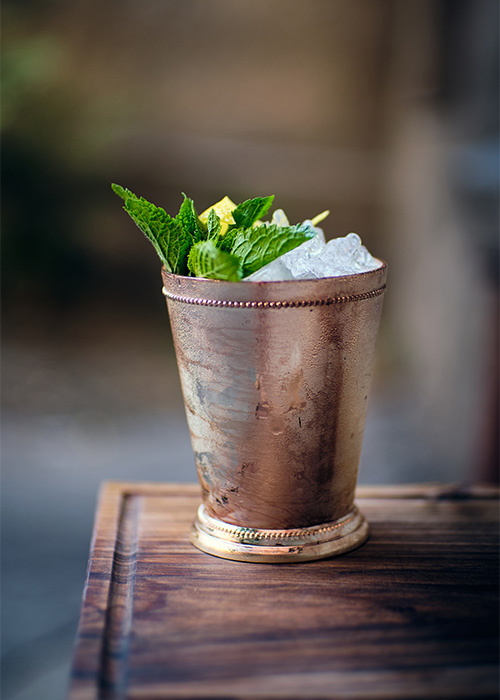
The Mint Julep is known for its presentation, its crushed ice and verdant mint sprig emerging from its iconic shiny silver cup. The metal vessel helps keep the drink ice-cold for longer, which is an essential part of the minty, refreshing whiskey cocktail. And although the drink became the official cocktail of the Kentucky Derby in the 1930s, its origins date back to the 1700s or early 1800s, when the first Julep cups were known to be made by master Kentucky silversmiths. The most famed version was made by the late American jeweler Mark J. Scearce, who crafted a Julep cup from sterling silver and engraved with the presidential seal for the White House.
Moscow Mule
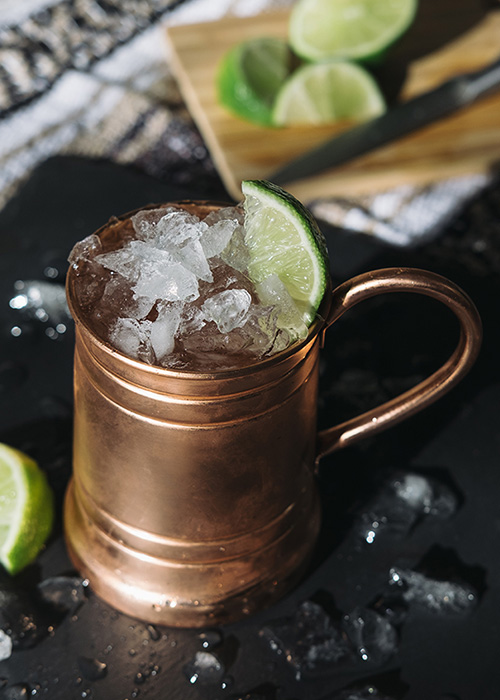
Similar to the Julep, the Moscow Mule (and its variations) doesn’t come in a glass, but rather is served in a dimpled copper cup. Legend has it that the drink dates back to around 1941, when Sophie Berezinski immigrated to the U.S. from Russia carrying about 2,000 copper mugs from her father’s factory. With no outlet to sell them, she wandered into what was the Cock ‘n Bull pub in L.A. where she stumbled upon John Martin, who had purchased the Smirnoff Vodka distillery, and Jack Morgan, who owned a ginger beer brand. Trying to make a name for their products in the U.S., the three devised the refreshing drink, to be served in the copper mugs.
